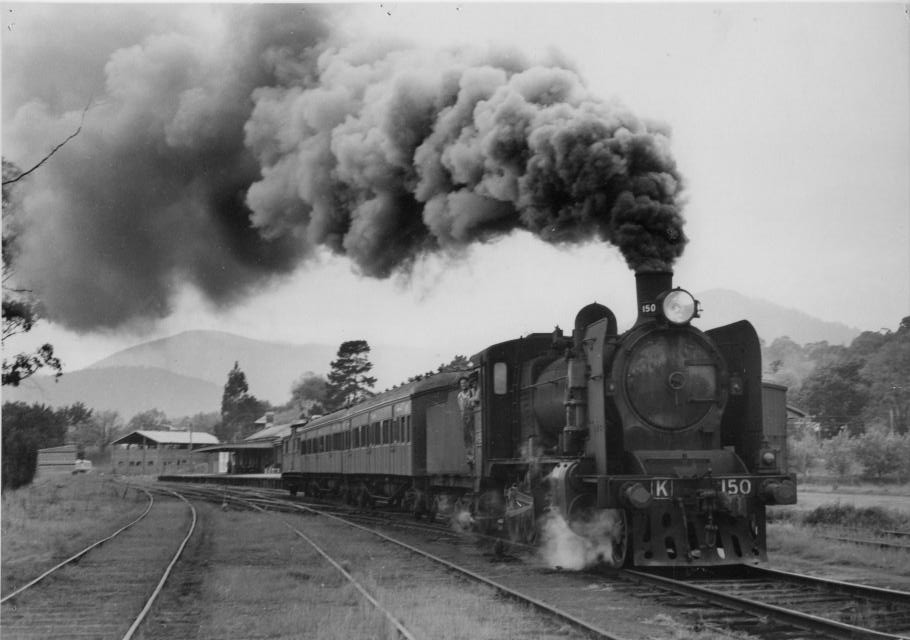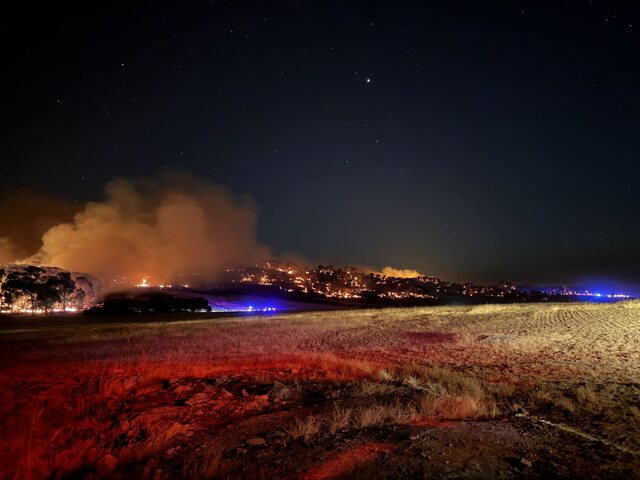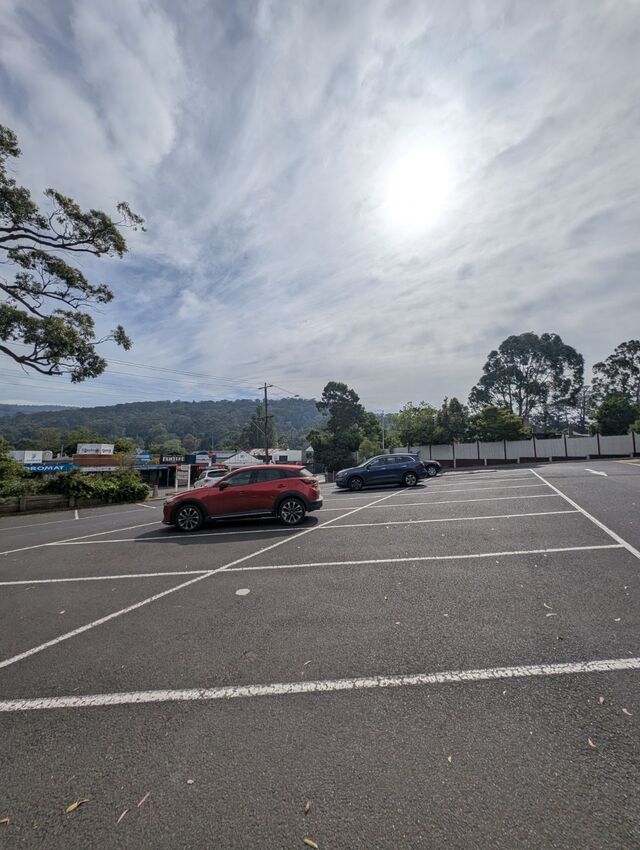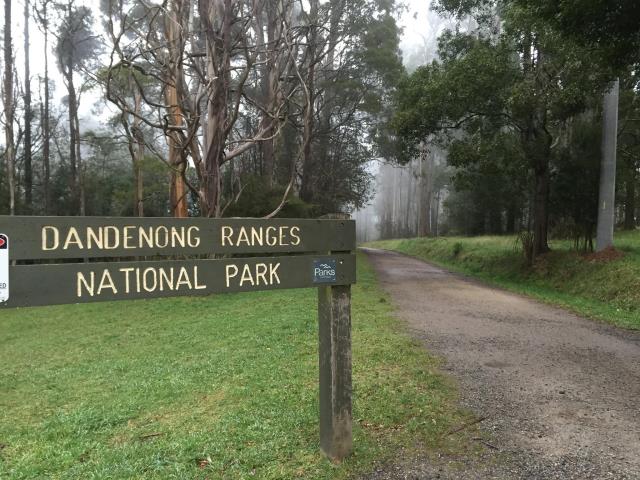The last steam locomotive pulled out of Healesville on 28 October 1957; its replacement, a 153 horsepower Walker railcar, made its final journey in December 1980. This ended the 91-year railway connection between Melbourne and Healesville, begun with great optimism and jubilant celebrations on 1 March 1889.
How and why did this happen? In a sense the line was doomed from the start but the process to closure was gradual and uneven. Even from its earliest days the line was running at a loss. The fares were said to be too expensive for the working man. However, the ‘excursion’ fares introduced in 1892 and a ‘Sunday Service’ in 1893 proved a boon as hundreds of passengers took advantage including the annual ‘picnic’ outings of many organisations. The Post Office, for example, in 1901 needed seven special trains to transport its 4000 employees and their families to Healesville. Tourists flocked to Healesville; at Easter 1911, 5000 of the 10,000 visitors to the town came by train. By 1914, however, the journey took two and a half hours, and a few years later, with shunting operations at every station, the ‘old hearse train’ took three hours.
Despite that, train travellers still arrived in Healesville in their thousands; in 1925, for example, 38,000 came.
In the 1930s the railway became a victim of changing patterns of life, and by 1934 patronage had dropped to 11,000. The ‘line’ was losing £2000 a year. Trains were less than half full. Mixed goods and passenger trains caused delays, but the volume of traffic did not justify separate services. In this situation it is not completely surprising that closure of the line was, at the very least, an implied consideration by the Victorian government as early as 1935. In June of that year the Healesville Tourist and Progress Association, sensing the situation, organised a deputation to the Transport Board ‘to show reasons for retention of the railway to Healesville’. The local newspaper later believed that the deputation had done enough to show why the railway should continue. For the time being the railway survived, and indeed, after the huge bushfires of 1939, thrived with the volume of damaged timber transported by rail during the early 1940s from Healesville to Melbourne.
By the late 1950s, however, the railway ‘teetered on the brink of closure’. The first blow was the replacement of the steam train with a diesel service, the ‘Healesville Guardian’ admitting the ‘Healesville Iron Horse is dying on its wheels’. There was an operating loss of more than £32,000, the weekly goods trains were only half full in 1960, and the Railways Department seriously considered closing the line then. Sir Arthur Warner, the Minister for Transport made it clear ‘the people of the hills must either support their passenger service and freight trains more or lose them entirely’.
The diesel service however continued to operate throughout the 1960s and 1970s. In 1979 rumours were rife that the line was about to close, but the ‘Mountain Views’, in its first edition, emphasised the future possibilities of the line. VicRail was accused of ‘negative thinking’, and was urged to ‘back local plans’, most of which centred on tourism.
A ‘Save the Rail’ group convened by Ray Donkin, and another led by Di Moore, not only held public meetings, and sent delegations to politicians but also demonstrated their commitment in practical ways by, among other things, painting the station buildings.
A voluminous correspondence and numerous articles graced the pages of ‘Mountain Views’ throughout 1979 and 1980, but as one astute ‘commentator’ noted, the retention or closure of the line would be a political decision. And so, it proved. A joint statement from local (Liberal) politicians made it clear that ‘the imminent closure of the outdated line’ would enable ‘a fast, reliable and safe public bus service’ to be introduced.
In February 1980 the Victorian Government announced an investigation into all freight and transport in Victoria would be undertaken by Mr Lonie. By December, as a result of the Lonie Report, the Minister for Transport announced the closure of the Lilydale to Healesville railway line, as well as many others throughout the state.
The line was closed because the journey was too slow, the patronage was insufficient, so the line ran at a loss, and vehicle transport interests lobbied for an alternative. The railway was not forgotten; ‘Going down the line’ is part of the local ‘lingo’ still used to describe going out of town.







